Posted on 12/20/2023
%20(1).jpeg)
Owning a German car can be an exhilarating experience. The reputation for precision engineering, performance prowess, and sleek design often comes with an aura of prestige. Yet, even these automotive marvels aren't immune to the occasional bump in the road. If you're a proud owner or considering joining the ranks, let's explore some common issues these vehicles may encounter and how you might steer clear of them. Understanding Electrics and Electronics Modern German cars are replete with advanced electronics that provide both luxury and safety features. However, this complexity can sometimes be their Achilles' heel. Issues like malfunctioning sensors, erratic windows, or unpredictable lights could emerge. To prevent such troubles: Adhere to regular maintenance schedules. Use only high-quality replacement parts. Have a specialized technician inspect your vehicle ... read more
Posted on 11/30/2023
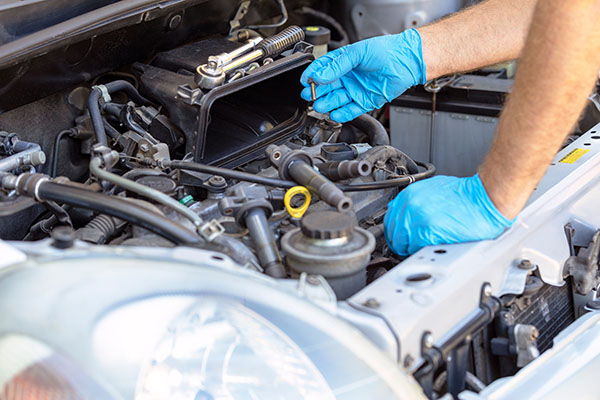
Engines are the heart of any vehicle, and like any vital organ, they require proper care to function effectively. Overheating is one of the most common issues that can plague an engine if its care is ignored - leading to significant damage if not promptly addressed. In today's article, we'll explore the reasons behind engine overheating and provide guidance on what you should do if you find yourself facing this problem. Causes of Engine Overheating Understanding why your engine is overheating is the first step toward prevention and immediate action. Here are some of the primary culprits: Cooling System Failures The cooling system is designed to regulate your engine's temperature. A malfunction in any component, such as a broken water pump, a stuck thermostat, or a leak in the cooling system, can lead to insufficient coolant flow and cause overheating ... read more
Posted on 10/30/2023
%20copy.jpg)
Your car's engine, a powerhouse of motion and energy, relies on a delicate balance to perform at its best. Amidst this intricate dance of power and precision, the coolant plays a pivotal role, ensuring that your engine stays cool and functions seamlessly. Yet, the flow of daily commutes and long journeys can gradually deplete this vital fluid, necessitating a mindful refilling process to maintain your engine's optimal temperature. Filling up the coolant isn't just a mechanical task; it's a gesture of care and attentiveness toward your vehicle's well-being. Step 1: Preparation is Key Park your vehicle on a level surface and allow the engine to cool completely before adding coolant. This ensures a stable, cool environment for a safe refill. The last thing you want is the leftover coolant to start spraying everywhere. Step 2: Locate the Coolant Reservoir ... read more
Posted on 9/30/2023
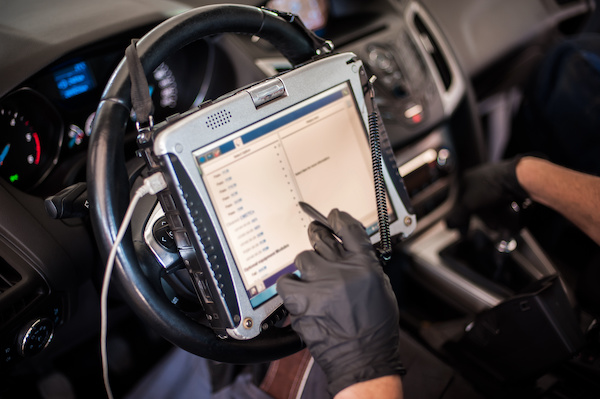
The check engine light pops up on your BMW's dashboard - what's next? For most Bimmer drivers, the check engine light is the most dreadful to deal with. It's like your car is trying to tell you something, but it's speaking in code. What do those BMW trouble codes mean? We'll demystify the language of your BMW's onboard diagnostics and help you understand the whispers of your beloved car. The Mystery of BMW Trouble Codes Your BMW is equipped with an onboard diagnostics system, known as OBD-II (On-Board Diagnostics II). When something goes amiss in your vehicle, sensors throughout the car pick up on irregularities and trigger trouble codes. These codes provide a glimpse into what's troubling your car's various systems. Common BMW Trouble Codes and Their Meanings P0300 - Random/Multiple Cylinder ... read more
Posted on 8/31/2023
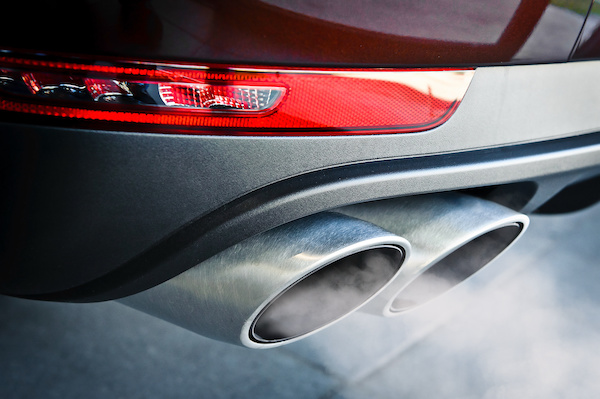
Has your car ever greeted you with white smoke billowing from the tailpipe? Your natural instincts will kick and have you wondering what could be causing this unexpected phenomenon. Fear not, because the team at Pete's, Inc is here to shed light on the mystery of white smoke and what it could mean for your automobile. Unlike black or blue smoke, which often indicates specific issues, white smoke tends to be associated with different scenarios. Possible Culprits of White Smoke Coolant Leakage: One of the most common causes of white smoke is a coolant leak into the combustion chamber. When coolant mixes with fuel and burns, it creates white smoke. This might be due to a faulty head gasket, cracked cylinder head, or even a warped engine block. Condensation: In colder weather, it's normal to see white smoke when you start your car. This is usually just condensation from the exhaust system and should dissipate as the engine warms up. Burning Oil: While burning oil typically pro ... read more
Posted on 7/31/2023
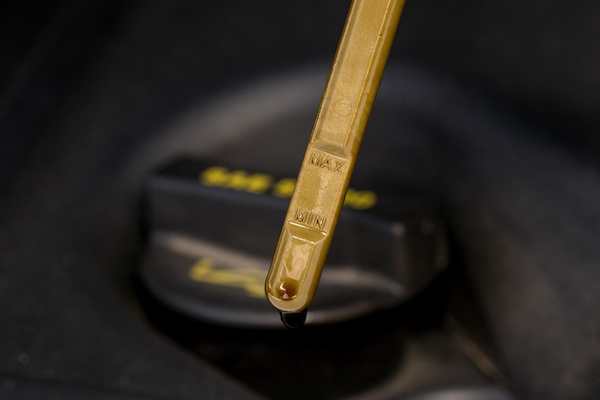
Owning a car requires regular maintenance to ensure its performance, safety, and longevity. While numerous maintenance tasks are best left to professionals, every car owner should know these top five essential maintenance tasks. Maintenance Activities These are essential maintenance requirements for every vehicle. They are simple and can be done by car owners without visiting a mechanic. 1. Checking and Changing Oil Regularly checking your vehicle's oil level is crucial for proper engine function. Refer to your car's manual for the recommended oil change interval and type of oil suitable for your engine. Regularly changing the oil ensures that harmful contaminants do not build up and damage vital engine components. 2. Tire Maintenance Proper tire care is essential for optimal handling, fuel efficiency, and driving safety. Check tire pressure regularly using a gauge and maintain it at the manufacturer-recommended levels. Additionally, inspect tires for signs of damage or w ... read more
Posted on 6/27/2023
.jpeg)
Keeping the correct tire pressure is among other key considerations for safe driving. Tire pressure is measured in pounds per square inch, and you can find the manufacturer-recommended pressure level on a sticker inside the driver's door or the owner's manual, depending on the vehicle brand. You may be wondering how certain you'll be sure the pressure of your tires is okay. It's simple! Use a tire pressure gauge at an auto parts store or your car's service station. Continue reading to learn how to check tire pressure and its importance. How You Should Assess Tire Pressure Auto care experts recommend checking pressure when the tires are cold, probably first thing in the morning or when your car is in park mode for at least three hours. It's because friction while driving makes the tires heat up, affecting the pressure inside them. You can check tire pressure when you top up gas or at least once a week. Follow these 4 steps to check tires: Loc ... read more
Posted on 5/30/2023
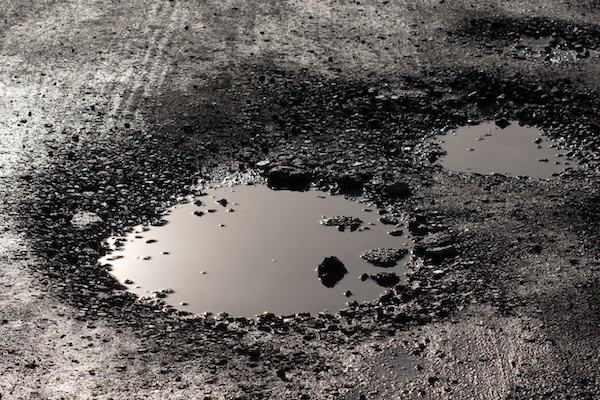
Amidst the excitement of our road journeys, there's an often-unseen adversary lying in wait: the dreaded pothole. These sneaky road craters can wreak havoc on our vehicles, causing costly damages and unexpected repairs. To ensure your vehicle stays clear of pothole damage, you must understand the dangers of the problem at hand and know how to fend against them. Here are some of our top tips that you should follow! Stay Vigilant: Potholes often appear when we least expect them, catching us off guard. Therefore, please remain vigilant while driving. Keep your eyes on the road ahead, scanning for any potential hazards. Don't forget to watch for visual cues like uneven surfaces, patches of worn-out asphalt, or standing water, as these can indicate the presence of potholes. Mind Your Speed: Speeding over potholes is a recipe for disaster. Higher speeds increase the impact force, amplifying the potential damage to your vehicle's tires, suspension, and alignment. By reducing yo ... read more
Posted on 4/26/2023

The exhaust system of a vehicle is an important part of its performance and can provide useful information about what might be going on underneath the hood. Different colors of exhaust smoke can indicate different problems, from minor to major repairs that need to be made. In this blog post, we'll examine what different colored exhaust smoke can indicate and the types of repairs you may need. White Smoke White smoke usually indicates a coolant leak. Coolant is the term used to describe a mixture of water and antifreeze, which is essential for maintaining your engine's temperature levels. If coolant begins to escape, it will cause white exhaust smoke as it mixes with the fuel in the combustion chambers. For repairs, you may need to replace a faulty radiator or gasket. Blue Exhaust Smoke Blue exhaust smoke indicates that the engine is burning oil. This could be caused by worn piston rings or other engine seals, which will allow oil to enter the combustion chamber and be burne ... read more
Posted on 3/30/2023

Drivers rely on their steering wheels every day to navigate their vehicles smoothly and safely. So, if your steering wheel feels stiff or challenging to turn all of a sudden, it can be a cause for concern. A stiff steering wheel can make it hard to control your vehicle, especially when making turns. To avoid putting yourself and your loved ones in a dangerous situation, please bring this to a professional mechanic's attention. There are several reasons why your steering wheel may feel rigid. Here are some of the most prevalent explanations: Low power steering fluid - Power steering fluid is essential for ensuring smooth and effortless steering. If your power steering fluid levels are low, it can cause your steering wheel to feel stiff. Check your power steering fluid levels regularly and top up as needed. Damaged power steering pump - The power steering pump is accountable for pumping power steering fluid through the steering system. If the pump ... read more